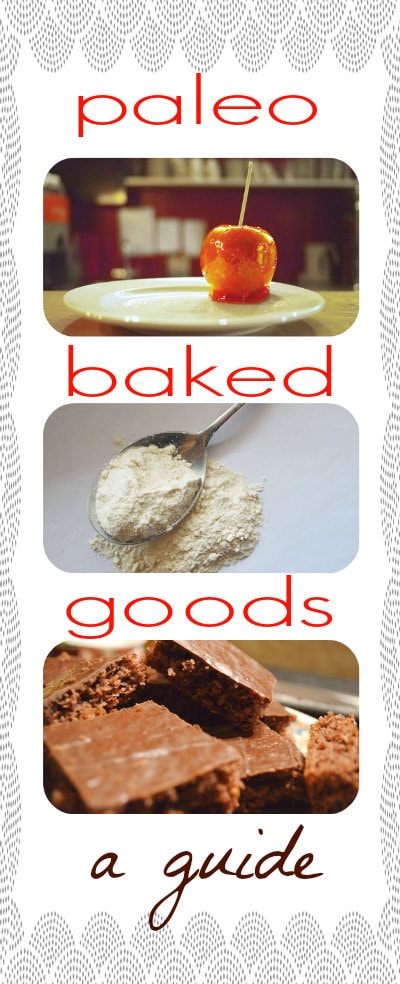This will be my first holiday season after removing most carbs, sugar and gluten from my diet almost a year ago. Paleo baked goods can seem daunting at first, but I've gotten pretty accustomed to adapting my old favorite recipes to fit my new lifestyle.
A little bit of trial-and-error and a lot of research has helped me come a long way in satisfying my sweet tooth (and even swapping out some of Nate's faves) without anyone being the wiser.
- Sugar substitutes. If you're using sugar substitutes, try to make sure you take for account the variances in sweetness. Stevia, for example, can be up to 300 times sweeter than sugar in its refined state. If you're swapping it into a recipe that normally calls for sugar you have to account for increased sweetness and decreased volume, usually decreasing liquids accordingly in your Paleo baked goods recipe. Likewise with honey or maple syrup. My favorite to use is Swerve because it is all-natural with no calories, no effect on blood sugar, it doesn't go through a chemical refining process and it can be substituted one-for-one in place of sugar. Coconut sugar is another interesting one that acts well in place of brown sugar, and dates and bananas can also be used to add natural flavor and moisture to Paleo baked goods.
- Flour substitutes. Almond flour and coconut flour are the big go-to flour substitutes in Paleo baked goods. Coconut flour is extremely absorbent, so I swap in about 1/3 cup of coconut flour in place of 1 cup of traditional wheat flour and increase the liquid in the recipe until the consistency feels right. With almond flour, look for an extremely fine ground to avoid gritty Paleo baked goods, and bake at about 50 degrees lower than traditional flour for a little longer, or the flour will burn.
- Chocolate. Look for dark, rich chocolate bars that boast a high percentage of pure cacao. I pick ones that are at least 80% or higher, meaning that it hasn't been mixed with as much sugar, milk and other additives. On its own left relatively untampered with, chocolate is a healthy antioxidant!
- Dairy substitutes. I just swap out almond milk or coconut milk where my recipes call for dairy. Adjust sweetness and thickness as needed.
- Caramel. Sometimes you just want a nice, smooth piece of buttery caramel. Fortunately, boiling coconut sugar and coconut milk together produces a rich, creamy caramel concoction that rivals the sweetest Werther's in any holiday Paleo baked goods.
- Use the right oil. When baking Paleo baked goods, you need to take care to use an oil with a really high smoke point – olive oil won't always cut it. Refined coconut oil is a favorite, but I've found it tends to impart a coconut flavor to my Paleo baked goods. I like to use Pompeian Grapeseed Oil, natural cooking spray that has a high smoke point, to coat the sides and bottom of my pans before dusting lightly with coconut or almond flour. Pompeian is my favorite because it's 100% grapeseed oil straight from France – no weird fillers or blends here. It can also be used for stir-frying, grilling or sautéing.
What are your favorite ingredients to swap into Paleo baked goods?


This is really helpful. I’m going to have to try some of these.
My brother and his wife eat Paelo and I was wondering how to make Thanksgiving meal! Thanks for the great pointers!
Check out our Paleo Thanksgiving round-up! TONS of awesome ideas over there: https://somedayilllearn.com//2013/11/18/paleo-thanksgiving/
Fantastic post, I needed this! I’ve been looking into Paleo and trying to learn all I can – appreciate this!
I love the Pompeian Grapeseed Oil spray. It has a great taste and I love the spray nozzle.
Great guide – super helpful!! I’ve got to try that caramel!!